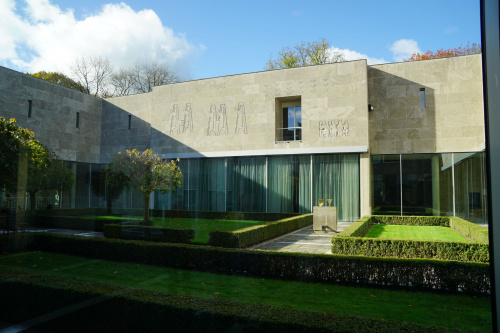Bedaux, architect
The architect Josephus Henricus Antonius (Jos) Bedaux (1910 -1989) built his name on a series of romantic country homes and more specifically on his design of the Cobbenhagen Building, which was opened in 1962. Self-taught, he learned his trade mainly from his father, a Tilburg contractor who was involved in local politics and also designed several elegant town houses himself. One of Bedaux’s first designs was for Our Lady’s Chapel in Huijbergen, more or less a copy of the chapel in the family’s garden. The Huijbergen chapel was the first of a whole series of Our Lady’s chapels, built up until the sixties by the Brabant Student Guild, which included the Tilburg Student Society St Olof, to commemorate their annual conventions.
Timeless type of modernism
These chapels had classicist designs, just like many of the buildings Bedaux designed up until the fifties. He is considered to have been inspired by Kropholler and Le Corbusier, the latter because of the “subdued and timeless type of modernism” that Bedaux’s buildings were beginning to show from the sixties on, like in those on campus. As he mixed a variety of styles and elements from the history of architecture with apparent ease, this initially earned him criticism from his colleagues, but in more modern days, when architecture became more inclined to borrow from tradition, Bedaux’s work was revalued as being exemplary.
Seven buildings on campus
Bedaux built about five-hundred works, seven of those for the University: those bearing the names of Cobbenhagen, Koopmans, Goossens and Simon, the student church, the former Faculty of Theology and, right next to it, the Sports Center. He often partnered up with garden designer Pieter Buys, who also designed the campus grounds, and artist Luc van Hoek, who provided the first floor of the Goossens Building with a brick relief sculpture. That Bedaux also played the violin is a fact we learn from his portrait, which has adorned the Cobbenhagen Building since its renovation in 2014. That he had a passion for Italian sports cars is a fact that is less well-known, just like the fact that his sixties model Alfa Romeo was often letting him down. To paraphrase Keats: a thing of beauty is not always a joy forever.
The inner garden of Cobbenhagen Buidling. This building, the first one on campus, ranks as one of the most important workds by Bedaux and is a national monument.

